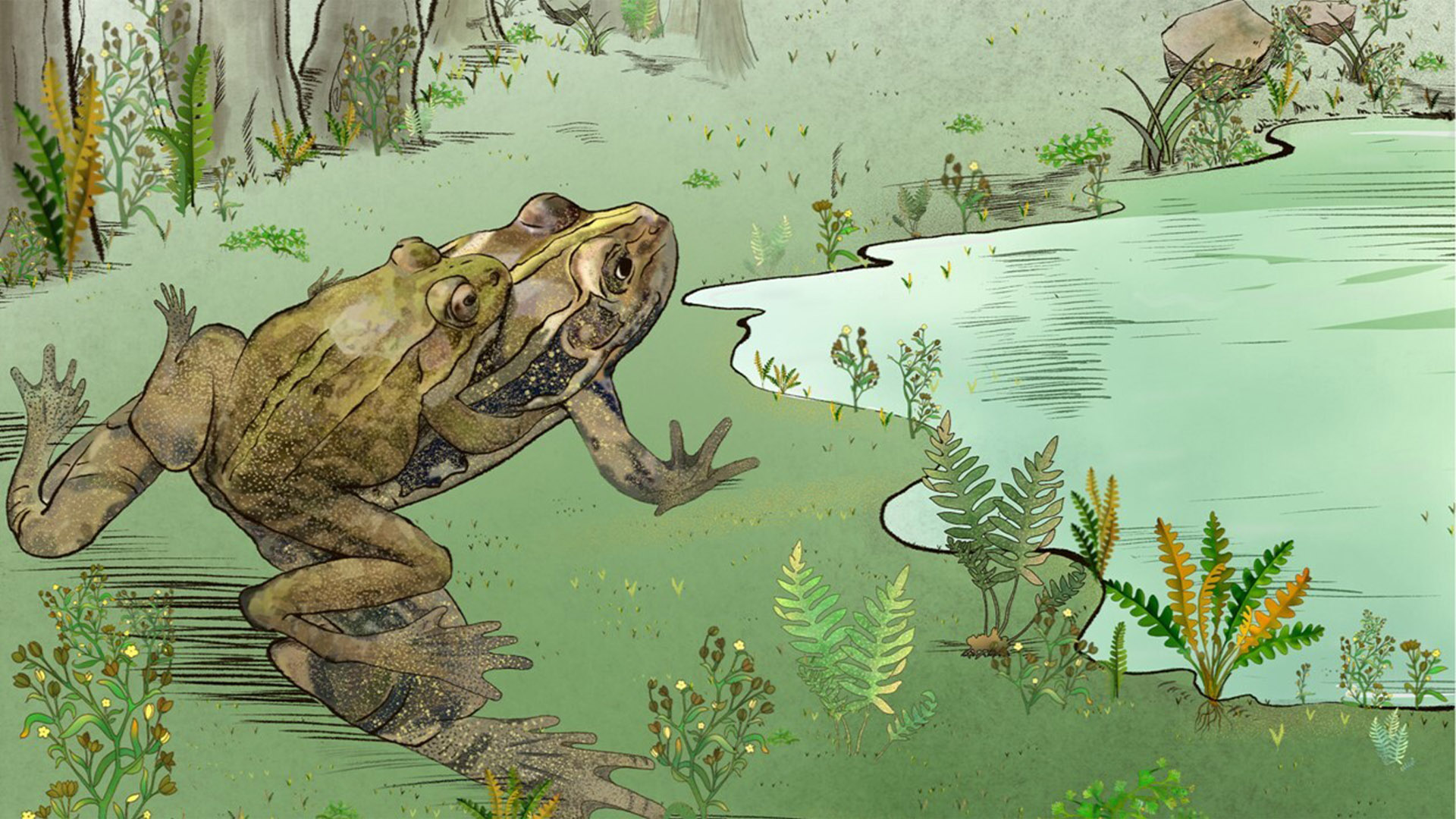Dinosaur-era frog found fossilized with belly full of eggs and was likely killed during mating
Gravid frog found in 100 million-year-old deposits in China is oldest fossil of its kind ever discovered.

A fossilized frog that lived alongside the dinosaurs 100 million years ago has been discovered with a belly full of eggs — the oldest such frog ever found, scientists have announced.
Researchers believe the frog was likely killed during mating, when the female may have been drowned by a male that was gripping her.
Frogs do not get pregnant. Instead, female frogs develop a batch of eggs that they are ready to lay, in what is known as a "gravid" state. The eggs are eventually laid and fertilized by a male.
The gravid frog, from the species Gansubatrachus qilianensis, was found in a fossil bed in northwest China and dates from the Cretaceous period (145 million to 66 million years ago), researchers revealed in a study published Feb. 6 in the journal Royal Society B: Biological Sciences.
Fossilized frogs from this period are exceedingly scarce, and those that have preserved soft tissues are even rarer. This specimen is more extraordinary still, as it's the earliest documented record of a gravid frog, the researchers noted.
Related: These female frogs fake their own deaths to get out of sex
The scientists compared the fossilized gravid frog with other previously discovered specimens. They built a high-resolution model of its skeleton using computed tomography (CT) scans of the fossils, and analyzed the composition of its eggs using X-rays.
Their analysis suggested that the frog was still skeletally immature, meaning she was able to sexually reproduce before being physically fully developed. Though this is common in many modern animals, there was previously no direct fossil evidence that this was the case for ancient frogs and toads.
Get the world’s most fascinating discoveries delivered straight to your inbox.
"The evolution of reproduction, especially reproductive strategies, is a very important part of biological evolution," lead author Baoxia Du, a paleontologist at Lanzhou University in China, told Live Science.
Understanding the reproductive strategies employed by early frogs could offer valuable insights into their complete reproductive history, he added.
As the frog was skeletally immature, the researchers ruled out old age as her cause of death. Environmental factors, such as abrupt changes in water conditions or algae blooms, were also unlikely, as evidence of this would've been apparent in the deposits studied, Du said.
Few other frog fossils were found in the deposits, suggesting that some disastrous event was not the culprit as it would have led to a mass death and numerous frog fossils nearby.
"We currently believe that the most likely cause of death is weakness or even suffocation after 'amplexus behavior,' which is quite common among existing frogs,” Du said.
Amplexus, which means embrace in Latin, describes the behavior when males mount and grip onto females with their front legs for hours or days at a time until her eggs are fertilized. In doing this, the female may have died from drowning or exhaustion, according to the study.
While more fossil records are required to substantiate the findings that early frogs were sexually mature before adulthood, the discovery provides a tantalizing glimpse into the development of ancient frogs. "The fact that [early frogs] thrived during the dinosaur era and endured multiple mass extinctions makes studying their survival strategies highly valuable," Du said.

Jacklin Kwan is a freelance journalist based in the United Kingdom who primarily covers science and technology stories. She graduated with a master's degree in physics from the University of Manchester, and received a Gold-Standard NCTJ diploma in Multimedia Journalism in 2021. Jacklin has written for Wired UK, Current Affairs and Science for the People.



